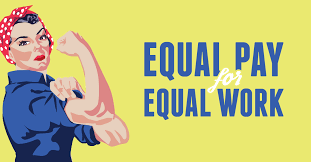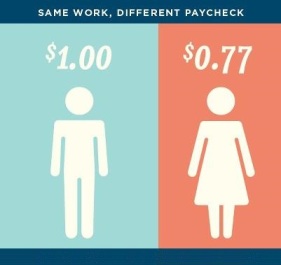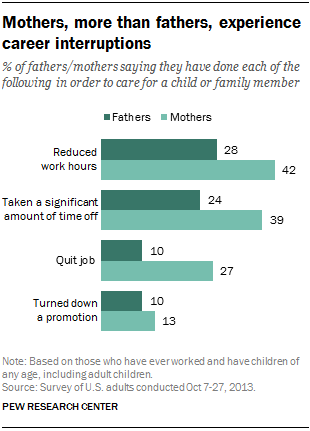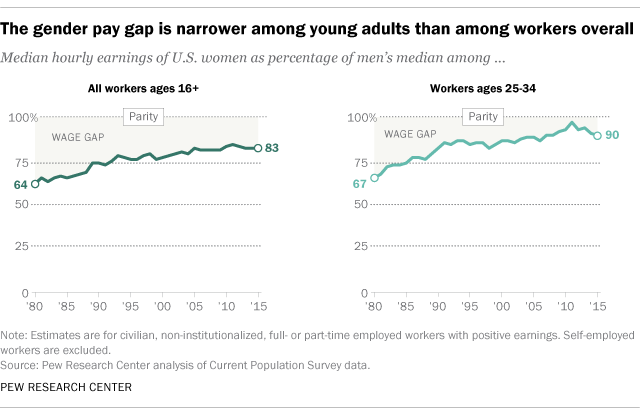Equal pay for equal work. It might sound like common sense, but unfortunately, it’s not reality. On April 4th, a day known as Equal Pay Day, people gathered in various cities to speak out against the various barriers women encounter in the workplace.
In 1963, President Kennedy signed the Equal Pay Act (EPA) into law, making it illegal for employers to pay unequal wages to men and women who perform equal work. At the time the EPA was made a law, women earned only 59 cents to every dollar earned by men. Today, women make, on average, only 78 cents for every dollar earned by men which tells us that significant differences remain and need to be addressed. The EPA started to help move the pay gap, but a lot still needs to be done.
 Women have made tremendous strides taking jobs and occupations previously held exclusively by men. But women are still segregated into minimum-wage working jobs, according to an AAUW report. Based on their analysis of Department of Education data, 40 percent of women work in historically female occupations like social work, teaching and nursing, but only five percent of men were employed in these fields as of 2013. American women who work full time all year are paid only 80 cents for every dollar paid to men — and for women of color, the wage gap is even larger. That is a gender wage gap of 20 percent! This means it took 44 years for the wage gap to close just 18 cents — a rate of less than half a penny a year.
Women have made tremendous strides taking jobs and occupations previously held exclusively by men. But women are still segregated into minimum-wage working jobs, according to an AAUW report. Based on their analysis of Department of Education data, 40 percent of women work in historically female occupations like social work, teaching and nursing, but only five percent of men were employed in these fields as of 2013. American women who work full time all year are paid only 80 cents for every dollar paid to men — and for women of color, the wage gap is even larger. That is a gender wage gap of 20 percent! This means it took 44 years for the wage gap to close just 18 cents — a rate of less than half a penny a year.
 On average, women receive more college and graduate degrees than men do. Yet, women continue to earn considerably less than men. The pay gap was the smallest in New York, the largest gap was in Wyoming, where women were paid 64 percent of what men were paid. The pay gap affects women from all backgrounds, at all ages, and of all levels of educational achievement. The pay gap is even worse for women of color.
On average, women receive more college and graduate degrees than men do. Yet, women continue to earn considerably less than men. The pay gap was the smallest in New York, the largest gap was in Wyoming, where women were paid 64 percent of what men were paid. The pay gap affects women from all backgrounds, at all ages, and of all levels of educational achievement. The pay gap is even worse for women of color.
In Pennsylvania, workers are on track to get the same pay for the same work in 2068. That is 51 years from now, the Institute for Women’s Policy Research reported. In New Jersey, equal pay is projected to happen in 2054. Overall, the U.S. is expected to have equal pay by 2059.

What can we do? Let’s help support raising the wage to promote fair pay for women. Equal pay for equal work shouldn’t be an idea. It should be reality. We need to make pay equitable. The Legislature can create paid leave and child-care policies allowing mothers to keep their jobs, avoiding long gaps in employment that drive down wages. And we need to raise the minimum wage — two-thirds of minimum-wage earners are women — and enact other policies to raise wages. We need to rally to combat wage discrimination and get our voices heard. Here are some dates in 2017 to support equal pay. Get out there and show your support!
2017 Equal Pay Days
March 7, 2017-Asian American Women’s Equal Pay Day
April 4, 2017-All Women’s Equal Pay Day
May 23, 2017-Mothers’ Equal Pay Day
July 31, 2017-Black Women’s Equal Pay Day
September 25, 2017-Native American Women’s Equal Pay Day
November 2, 2017-Latinas’ Equal Pay Day
Mary Beth Iannarella
Girl Talk Marlton


“When I joined four teammates in filing a wage-discrimination complaint against U.S. Soccer late last month, it had nothing to do with how much I love to play for my country. It had everything to do with what’s right and what’s fair and with upholding a fundamental American concept: Equal pay for equal play.” —Carli Lloyd, in a New York Times article from March 2016
“If fighting for equal pay and paid family leave is playing the gender card, then deal me in!” —Hillary Clinton, in Harlem at the Apollo Theater in March 2016
“Without women’s groups knocking on doors, I wouldn’t have gotten where I am. We need women to support each other. We still don’t have equal pay.” —Sonia Sotomayor, at an event organized by Watermark in 2013

